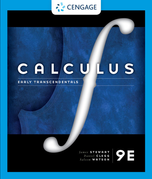?(a) Newton's Law of Gravitation states that two bodies with masses \(m_1\) and \(m_2\)
Chapter 5, Problem 35(choose chapter or problem)
(a) Newton's Law of Gravitation states that two bodies with masses \(m_1\) and \(m_2\) attract each other with a force
\(F=G \frac{m_1 m_2}{r^2}\)
where r is the distance between the bodies and G is the gravitational constant. If one of the bodies is fixed, find the work needed to move the other from r=a to r=b
(b) Compute the work required to launch a \(1000-\mathrm{kg}\) satellite vertically to a height of \(1000 \mathrm{~km}\). You may assume that the earth's mass is \(5.98 \times 10^{24} \mathrm{~kg}\) and is concentrated at its center. Take the radius of the earth to be \(6.37 \times 10^6 \mathrm{~m}\) and \(G=6.67 \times 10^{-11} \mathrm{~N} \cdot \mathrm{m}^2 / \mathrm{kg}^2\)
Unfortunately, we don't have that question answered yet. But you can get it answered in just 5 hours by Logging in or Becoming a subscriber.
Becoming a subscriber
Or look for another answer
